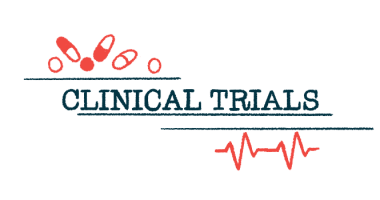Takhyrzo Found to Be Effective HAE Treatment Across Minority Groups
Efficacy of Takhzyro is similar, regardless of patient's race or ethnicity, study finds

The efficacy and safety of Takhzyro (lanadelumab) in preventing hereditary angioedema attacks are similar across different racial and ethnic groups, according to an analysis of data from a Phase 3 trial and its open-label extension study.
However, with few patients from minorities participating in clinical trials, conclusions are only observational and comparisons between groups cannot be made, researchers noted.
“Evidence suggests that the effectiveness and tolerance of [Takhzyro] are similar between the [racial and ethnicity] groups,” the researchers wrote, adding that “efforts should be made to increase the recruitment of minority patients into studies” to ensure the safety and efficacy of medications “in all races and ethnicities.”
Findings were detailed in a study, “Effectiveness and safety of lanadelumab in ethnic and racial minority subgroups of patients with hereditary angioedema: results from phase 3 studies,” published in the journal Allergy, Asthma & Clinical Immunology.
Hereditary angioedema (HAE) is a rare disorder characterized by unpredictable recurrent swelling in the deeper layers of the skin. In severe cases, it can become life-threatening and require immediate medical attention.
The disease is caused by genetic mutations that lead to the overproduction of bradykinin, a pro-inflammatory that regulates blood vessel widening and permeability. Angioedema swelling occurs when bradykinin levels increase in the deeper layers of the skin, and fluid from blood vessels leaks and pools in surrounding tissues.
Takhzyro is an antibody-based therapy that is designed to bind and inactivate kallikrein, a protein that regulates bradykinin levels. By blocking kallikrein’s activity, Takhzyro is expected to lower bradykinin levels and prevent swelling attacks.
The medication is approved in the U.S., Europe, and other regions to prevent HAE attacks in patients 12 and older.
The approvals were supported by data from the Phase 3 HELP trial (NCT02586805) and its open-label extension study, HELP OLE (NCT02741596).
Data from HELP showed that when given at a dose of 300 mg every two weeks, Takhzyro was able to lower the mean number of monthly HAE attacks by 87%.
The extension study indicated this reduction in swelling attacks persisted for up to 2.5 years of treatment, and that Takhzyro markedly improved the health-related quality of life in patients.
Racial and ethnic minority groups are underrepresented in clinical trials
Although HAE is seen in people of all races, the majority of patients included in clinical trials are white. Minorities are underrepresented, which might lead to a “potentially significant knowledge gap for healthcare providers in diagnosis and treatment of minority patients with HAE,” according to the study.
Now, a team of U.S. researchers compared the efficacy and safety of Takhzyro seen in white patients who participated in HELP and its extension study to those observed in minority groups, which included Hispanic/Latino and Black/African American individuals. Of note, the researchers have financial links to pharmaceutical companies, including Takeda, which markets Takhzyro.
In both studies, most patients were white (HELP: 88.1%; HELP OLE: 93.4%) and non-Hispanic/non-Latino (HELP: 92.0%; HELP OLE: 93.4%).
Takhzyro decreased the number of HAE attacks in patients from all race/ethnic groups in both studies. In HELP, the medication reduced mean attack rates by 88.2% (from 3.67 attacks per month to 0.43) in white patients, and by 79% (from 2.03 attacks per month to 0.48) in Black/African Americans.
This reduction was also observed in Hispanic/Latino patients, where attack rates dropped by 92.5% (from 3.7 attacks per month to 0.31), and in non-Hispanic/non-Latino individuals, where they fell by 84.1 % (from 3.5 attacks per month to 0.49).
Similar results were obtained in HELP OLE, where Takhzyro led to reductions in mean attack rates: by 87.7% in white patients, 78.9% in Black/African Americans, 97.7 % in Hispanic/Latino, and 86.6% in non-Hispanic/non-Latino.
A large proportion of patients remained attack-free from the beginning of the study to six months after treatment initiation. This proportion was higher among Hispanic/Latino patients (66.7 % in HELP, 61.5 % in HELP OLE) compared with non-Hispanic/non-Latino individuals (35.1 % in HELP, 49.5% in HELP OLE).
Takhzyro’s safety profile was similar in both studies and across different racial and ethnic groups. Most adverse events reported were mild to moderate pain at the injection site, and viral upper respiratory tract infections.
“The efficacy and safety of [Takhzyro] were similar regardless of race and ethnicity in the HELP and the HELP OLE studies, but greater knowledge of diagnosis and treatment of HAE for these minorities are required to ensure [these patients have] adequate care,” the researchers wrote.








